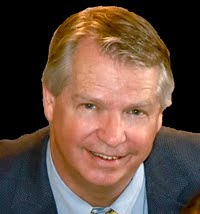
Perhaps the most overlooked issue for all sectors of the renewable energy paradigm is the availability of trained manpower. Maybe it should be the prime issue rather than a secondary one. It certainly will be once new technologies have emerged because widespread implementation and deployment will depend on the availability of a generation of new laborers for work that cannot be off-shored.
 A leading advocate for the building this green collar workforce now is Van Jones, a legal scholar and an Oakland, California activist who has just received notification that his new book, The Green Collar Economy, has been listed on the NY Times Bestseller list. Any author would be thrilled but you get the feeling that it means more to him than better market exposure for the book. The book is, afterall, a means to an end. It is the cause that matters and Jones is nothing if not passionate about the cause.
A leading advocate for the building this green collar workforce now is Van Jones, a legal scholar and an Oakland, California activist who has just received notification that his new book, The Green Collar Economy, has been listed on the NY Times Bestseller list. Any author would be thrilled but you get the feeling that it means more to him than better market exposure for the book. The book is, afterall, a means to an end. It is the cause that matters and Jones is nothing if not passionate about the cause.What is the cause? The subtitle of the book is "How One Solution Can Solve Our Two Biggest Problems." The two problems are the fossil based economy and its impact on the economy. The "one solution" proffered by this book is the creation of new, meaningful green collar careers for the underemployed and often unskilled urban and rural workforce in America and other parts of the world.
Clearly, with a new administration headed to Washington (coupled with a clear Democratic majority in both houses) social policymaking and budget allocation is going to change. Add to that the threat of global economic collapse and the question isn't is the government going to address the needs of the middle class - it is how is it going to do it? Surely, this administration will attempt to get more Americans back to work.
Public works programs like the Civilian Conservation Corps (CCC), not seen since the days of FDR, are already being forecast above the fold in major newspapers. The likely projects will involve not only energy production, but also energy efficiency and transportation infrastructure. That is good because new bioenergy projects in particular will be dependent on increased traffic of heavy vehicles on good roads.
 This is what is making Van Jones' book so timely. He addresses the economic justice issue by advocating a new spirit of survival collaboration (Noah and the Ark) in place of counterproductive confrontation (David vs. Goliath). He presents numerous case studies that document different ways that community-based organizations are changing their landscape, employment picture, and can-do self image.
This is what is making Van Jones' book so timely. He addresses the economic justice issue by advocating a new spirit of survival collaboration (Noah and the Ark) in place of counterproductive confrontation (David vs. Goliath). He presents numerous case studies that document different ways that community-based organizations are changing their landscape, employment picture, and can-do self image.In the back of the book is a list of online resources for learning more and getting involved. Some of my favorites are ACORE, the Apollo Alliance, the Los Angeles Coservation Corps, Andy Lipkis' Tree People, and Majora Carter's inspirational Sustainable South Bronx.
 Perhaps the most obvious choice for getting involved is the Green For All website - a sophisticated online resource for engaging stakeholders, advocating policy, and expanding public awareness of the need and potential for "Green Jobs Now!" It too is a means to an end, leveraging the power of the internet to coordinate events as well as defining the scope of the campaign.
Perhaps the most obvious choice for getting involved is the Green For All website - a sophisticated online resource for engaging stakeholders, advocating policy, and expanding public awareness of the need and potential for "Green Jobs Now!" It too is a means to an end, leveraging the power of the internet to coordinate events as well as defining the scope of the campaign.What I see missing in the book is a comparable campaign for rural America. The forests, farms, and rangelands of the countryside will provide a host of opportunities for growth of meaningful green collar jobs. Who will run the new equipment, build and operate green power plants and biorefineries for an increasingly decentralized renewable energy paradigm? Unless we stop the leaching of jobs from our depressed rural cooperatives and enterprises, much of the existing infrastructure will need to be refinanced and rebuilt and new manpower trained to deploy regional solutions. These are issues that are part of the agenda of 25x'25 and many national industry associations.
----------------
technorati manpower, waste, pollution, urban, landfill, legislation




